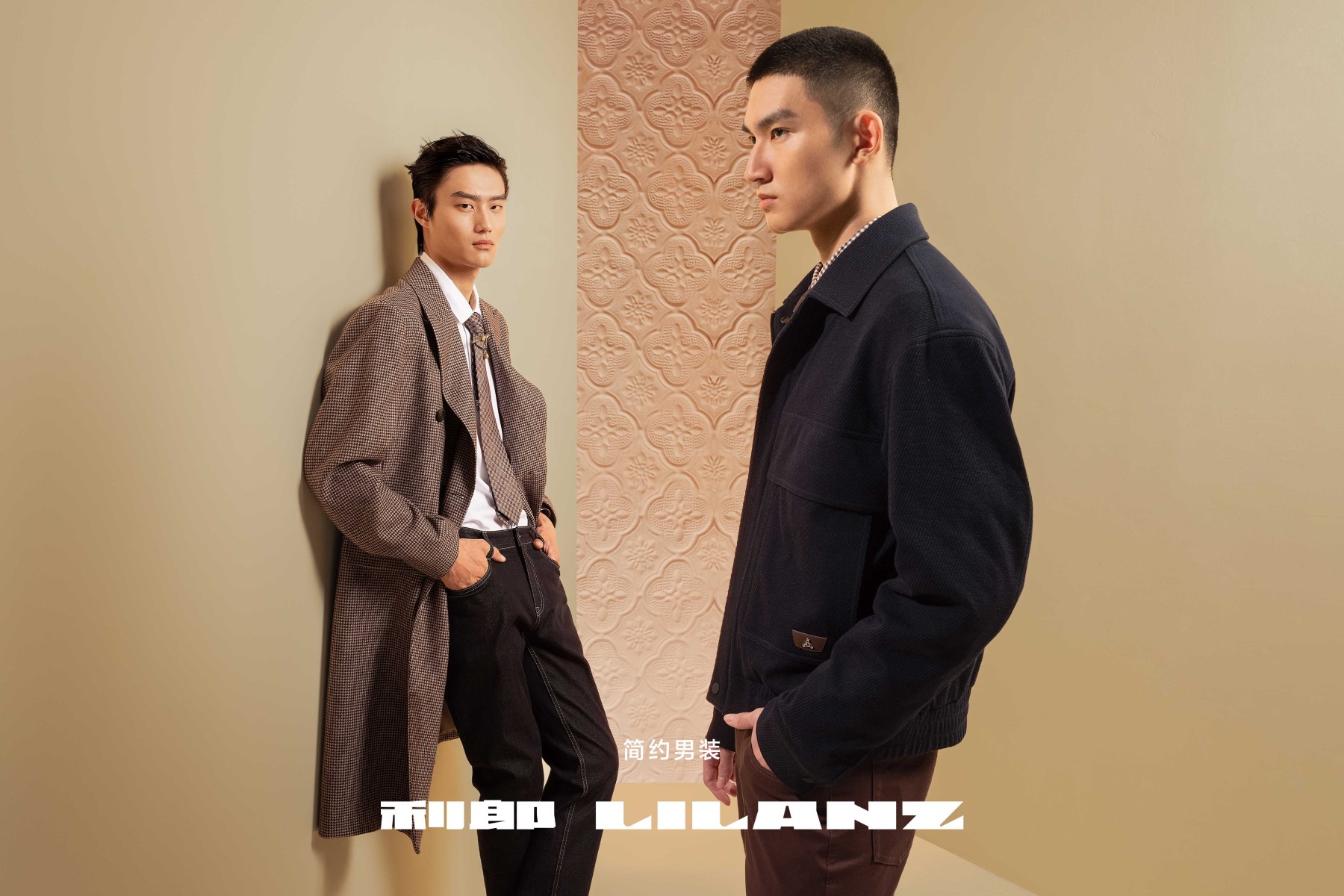A massive zipper, when pulled open, reveals a wall bathed in diffused light. Hundreds of cardboard boxes, struck by electric currents, are stacked to create a sanctuary of sound. Countless ever-changing geometric shapes construct an unstoppable giant…
On the morning of September 9, 2023, the Maritime Silk Road Arts Festival kicked off in Quanzhou, Jinjiang, the starting point of the ancient maritime Silk Road, with an exhibition titled Coding Images: The Path of Digital Weaving. The convergence of digital art and fashion manufacturing, featuring digital art pieces from six international artists and the fashion show that followed, has ignited people’s senses and imaginations.
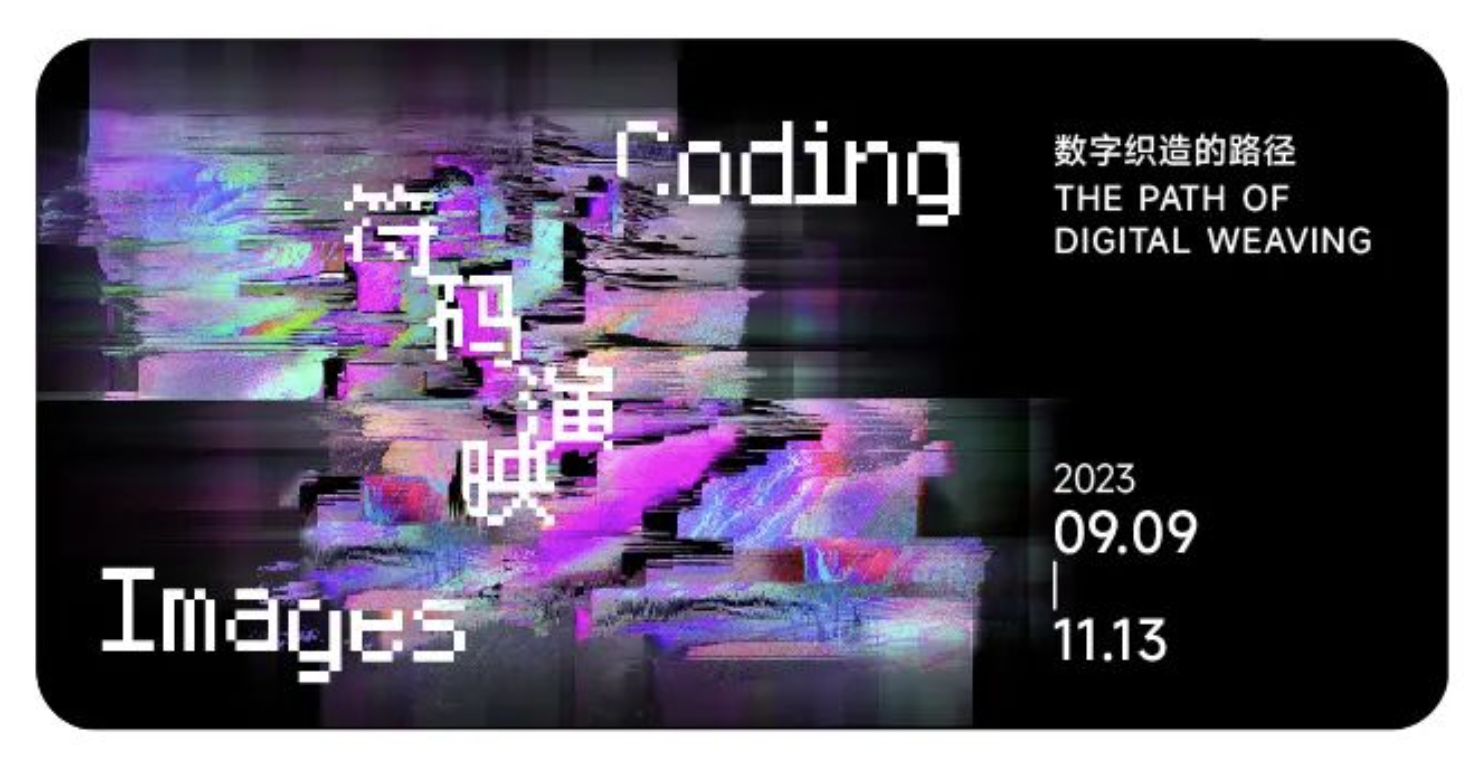
Digital art has opened doors to the virtual world for people while also enriching and inspiring creative expression in the real world.
In Jinjiang, Fujian province, where Quanzhou is located, digital art unexpectedly encounters fashion manufacturing, sparking surprising creativity.
Creative works from six pioneering digital artists from France, Canada, Germany, the UK, Switzerland, and more are showcased. Using elements such as lines, patterns, components, packaging, and garments as clues, they employ various techniques like painting, sound, light, and digital technology to present a series of richly layered works that explore the production, innovation, and design of fashion in the digital age.
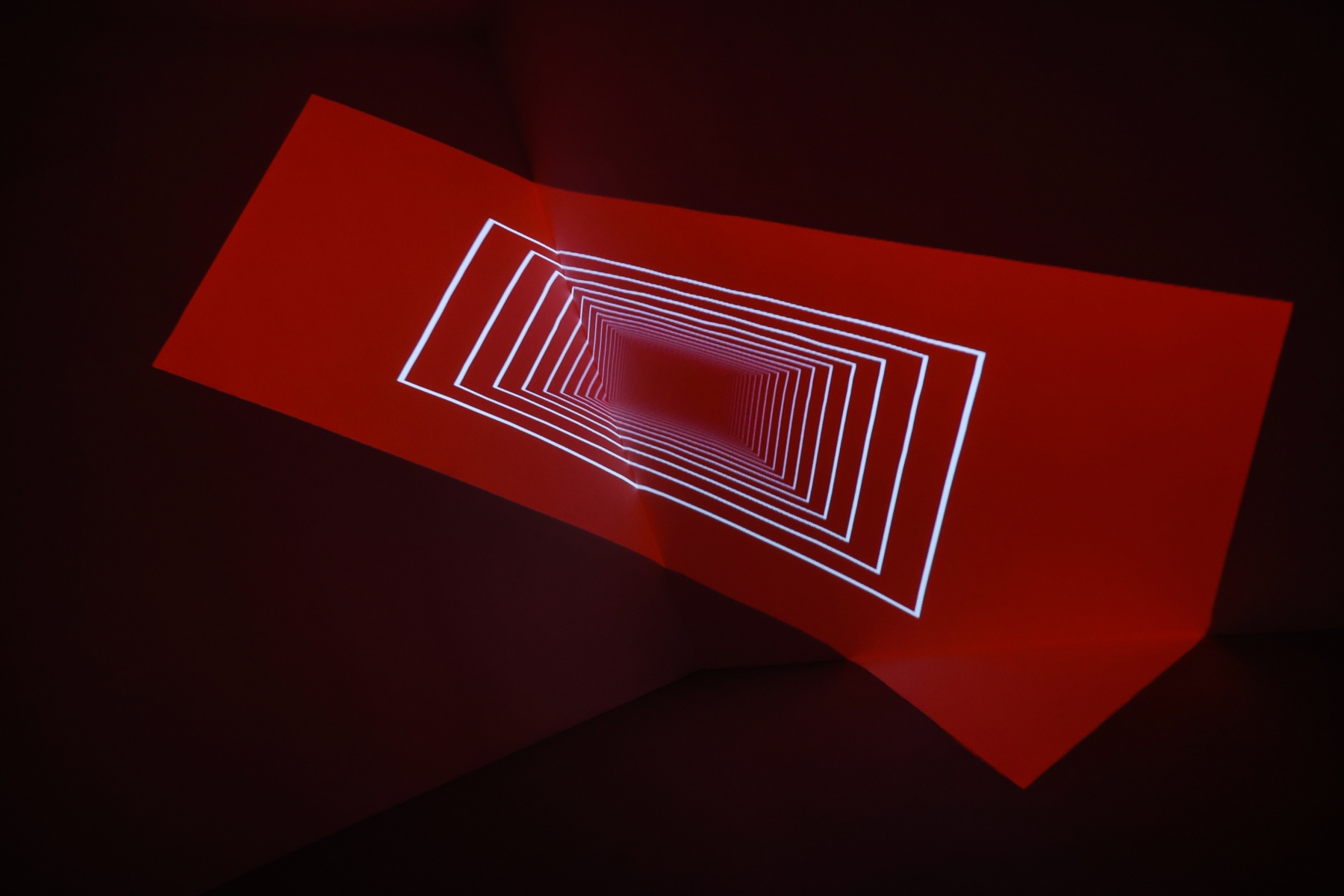
Upon entering the 2,000-square-meter exhibition space, the first thing you encounter is the dark space featuring the light installation “DELTΔ” by French artist Olivier Ratsi.
In a corner of the space, the artist’s installation projects a “red door.” Two-dimensional images transform into three-dimensional forms in the corner of the wall. People standing in front of this “door” witness countless white lines forming concentric “door frames” that surge forward. They seem to fall into it, exploring the mysteries behind the door.
The Greek letter DELTΔ, derived from a hieroglyph representing a door, symbolizes the opening of the exhibition. The continuous appearance of white lines in the work represents the essential “threads” in garment production, opening up exploration into the lifecycle of clothing.
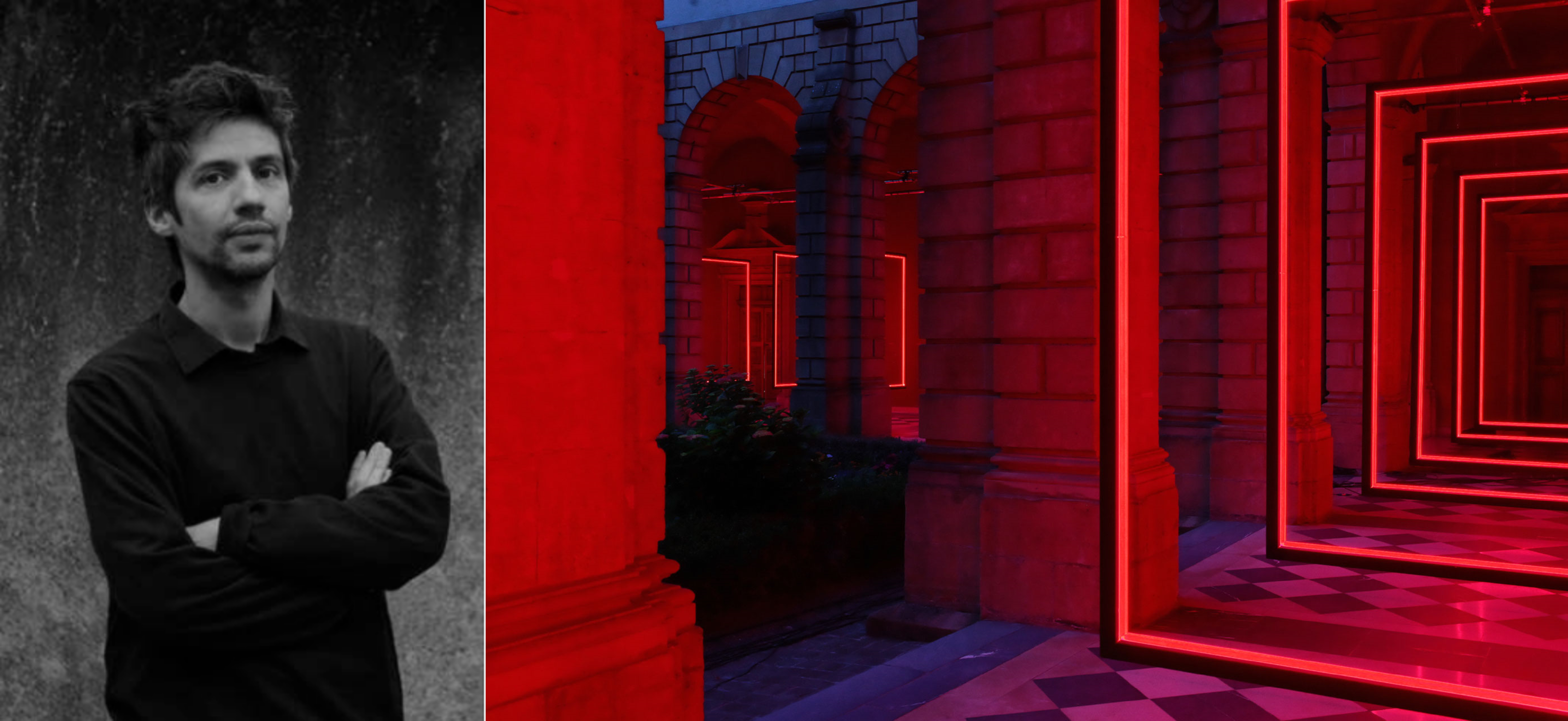
Olivier Ratsi and his work “Frame Perspective.” He excels in using light and projected video to create site-specific art and immersive installations. He frequently employs deformation techniques he has developed during his research, disrupting reality and inviting viewers to experience his work through their own reactions.
To the right of DELTΔ, Canadian-French artist Nicolas Sassoon‘s digital animation work CONTINUUM is screened. He uses early computer graphics to create various pixelated forms, patterns, and architectural structures, displaying hypnotic animations on the screen. This showcases the optical tension and oscillations of the work’s visual properties, echoing the “patterns” in fashion.

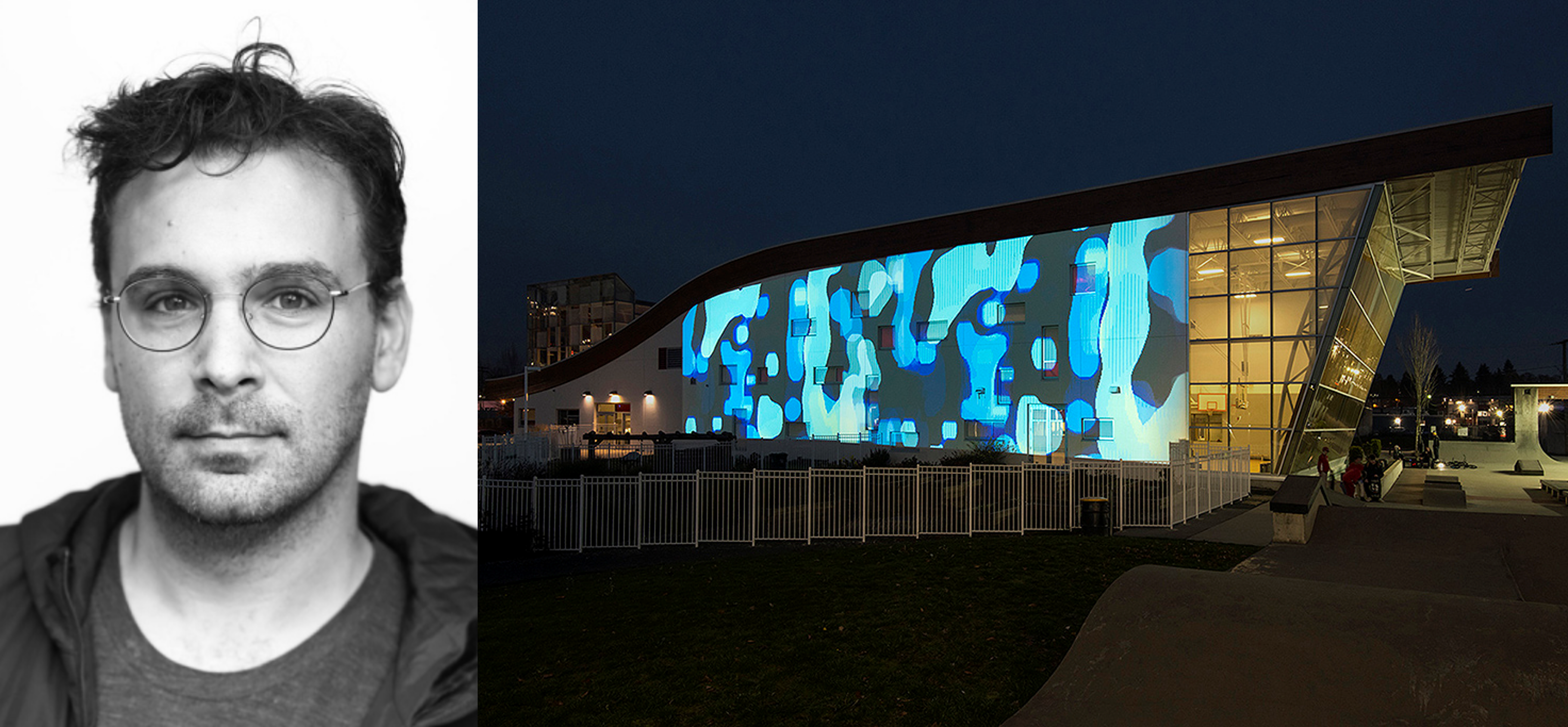
Nicolas Sassoon and his work Liquid Landscapes.
Walking through the passage between “lines” and “patterns,” a massive stainless steel zipper comes into view. Light enters the space from the opening of the zipper, effortlessly breaking the spatial constraints between inside and outside the wall.

The zipper is a common accessory in clothing. British artist Alex Chinneck creatively invites us to ponder: What lies behind the wall? What stories hide behind these clothing materials?

Alex Chinneck and his work “Rock And Roll.” His works span the fields of art, architecture, and theater, and he is known for challenging our understanding of familiar objects by, for example, unzipping the outer walls of buildings, tying knots in columns and mailboxes, and creating anti-gravity large-scale installations.
If the zipper is still part of the clothing production process, Swiss artist Zimoun‘s work focuses on the journey of products from the factory to consumers.
He assembles hundreds of recycled cardboard boxes into a hollow circular pillar, with each box equipped with a DC motor. A white ball is attached to the motor with a thin rope. When powered on, hundreds of small balls collide with the cardboard boxes, creating a unique auditory experience.
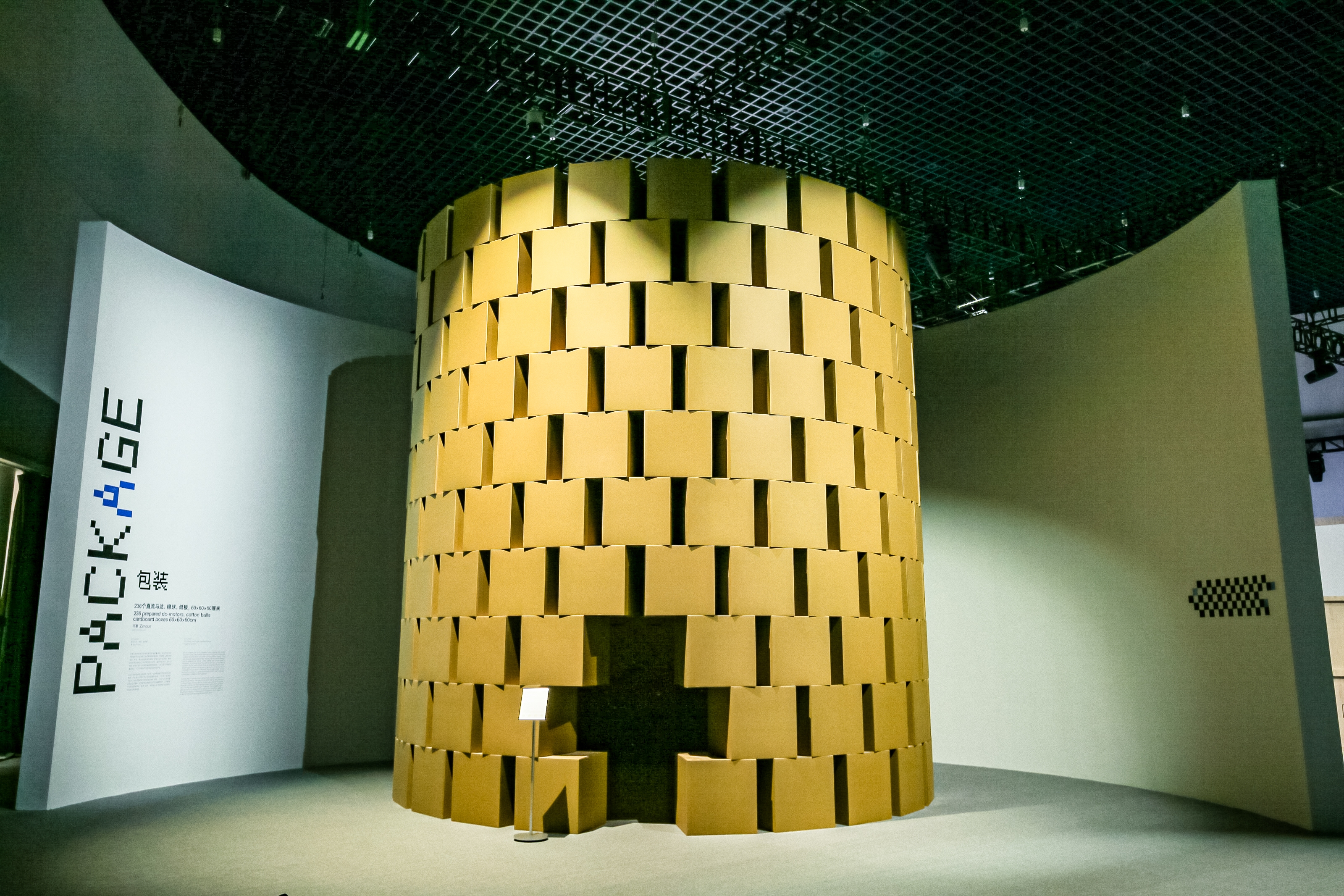
In the hands of the artist, these ordinary and common materials seem to come to life, producing their own sounds. Stepping into it feels like being immersed in a symphony of cosmic particle collisions.

German artist Vincent Schwenk also explores the circulation of clothing. He showcases 3D animated dances on several container display installations. Clothing made from different materials forms a continuously moving “person,” but it detaches from the physicality of a person. The movement of the fabric generates a dance-like effect, symbolizing the fusion of diverse consciousness.

Finally, the CG image work “Walking City” by the British art group Universal Everything displays a constantly walking architectural entity. During its journey, its shape, form, and constituent materials constantly change, representing the continuous evolution and development of fashion, as well as hinting at the infinite possibilities of future fashion design.
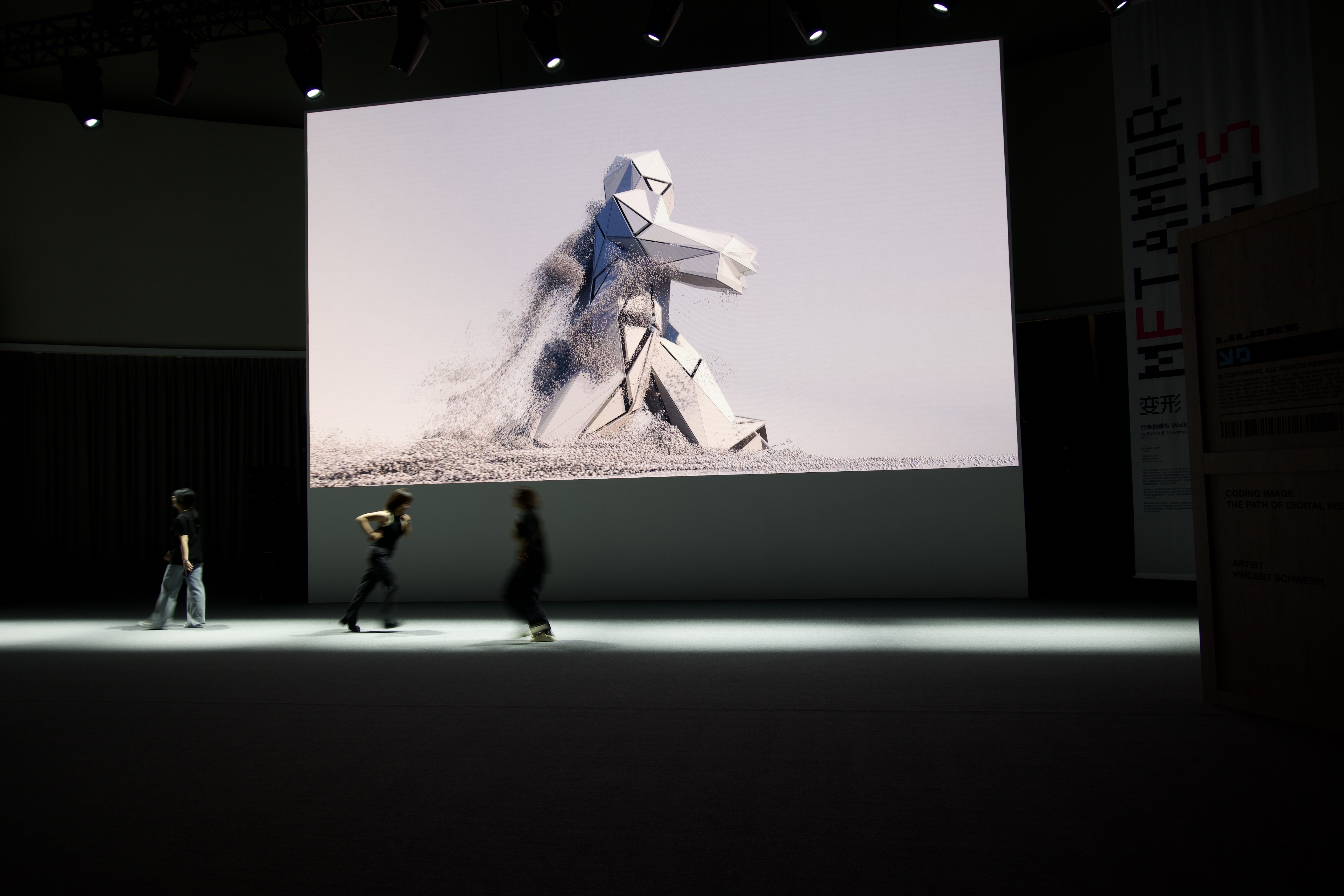
Clothing materials are akin to notes and bricks. Crafting clothes, like composing music and building structures, involves working with the most basic and humble materials to create finished products. These products are delivered to consumers by designers and brands, who imbue them with aesthetics and narratives. Consumers, in turn, experience them physically and engage in a dialogue with the brand.
Digital art communicates in a similar manner: artists use code to create digital works, inviting viewers to interact with them, resulting in personalized perceptions and understandings.
Regardless of the type of dialogue – brand and consumer, artist and viewer – it’s not merely a one-way exchange. Individual feedback becomes part of the work, propelling the spiral of the “encode-decode” cycle.
Art and aesthetics have always been important influences and sources of inspiration in the fashion industry, especially in contemporary times. Pop art, epitomized by Andy Warhol, brought the concepts of replication and mass production from industrial manufacturing into art. Symbolic images and designs have made art and commerce even more closely intertwined.

The fashion show at the opening ceremony showcased a clothing collection created by the LILANZ design team, drawing inspiration from the aforementioned digital art pieces.
As the curator of this digital art exhibition, the Chinese menswear brand LILANZ has been exploring the relationship between clothing and art. Wang Liangxing, President of LILANZ, stated at the exhibition’s opening that making clothing is akin to creating art. Art nourishes the brand’s growth, inspiring the brand’s team to create better products, infusing them with aesthetics and narratives, and adding more value to the real economy.
The exhibition is held at the LILANZ Creative Center, located within the Jinjiang LILANZ Cultural Creative Park. It serves as a regional public art space that combines public art experiences, exhibition spaces, cultural spaces, and art education. Completed in 2021, the art center’s glass façade shimmers like the sea, and its two-story duplex structure stands tall like a sail, symbolizing the vision of “setting sail” while reflecting the traditional architectural structure of Quanzhou.
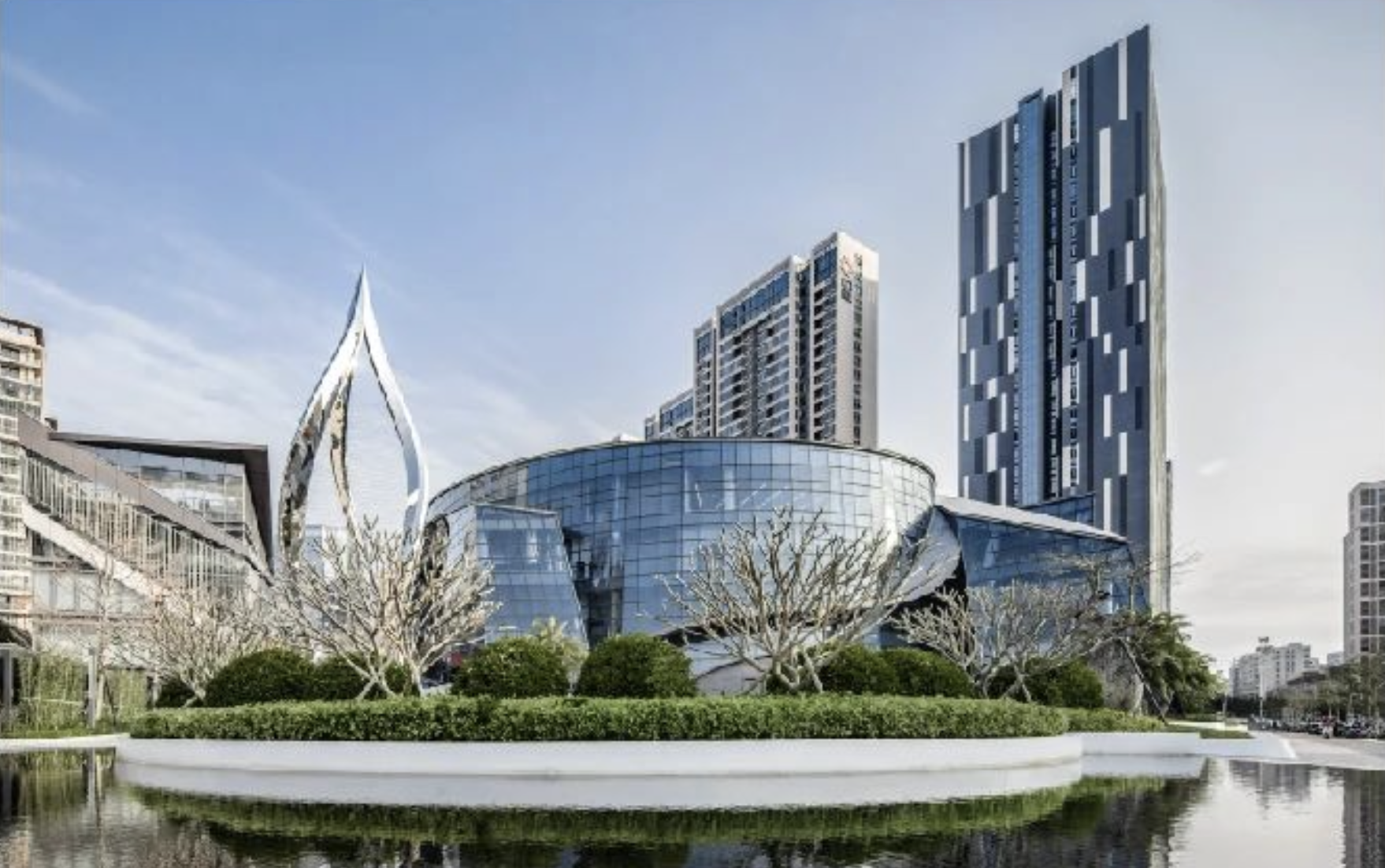
Over a millennium of cultural and commercial fusion has shaped this World Heritage City and fashion hub with an open, inclusive, and fearless spirit. As a brand that grew up in Jinjiang and has always been rooted here, LILANZ has a deep affection for this city.
Wang said, “We have always been thinking, while building our brand, what we can do for this city. I believe that by using this land beneath our feet as a place for citizens to gain energy, organizing art exhibitions as a regular practice, art will gradually become integrated into the daily lives of the citizens, subtly elevating the taste of Quanzhou Jinjiang, attracting more people to come to Jinjiang, understand it, and fall in love with it.“
| Image Credit: Provided by the Brand, Official Websites of the Artists
| Editor: Maier



